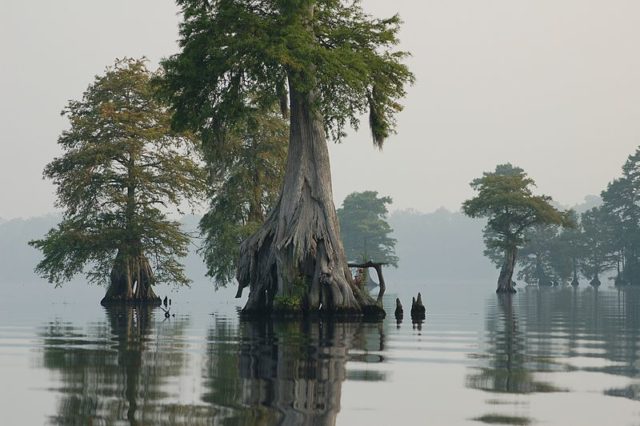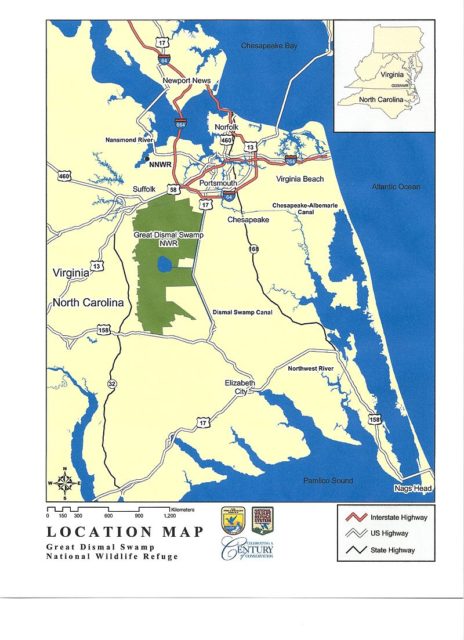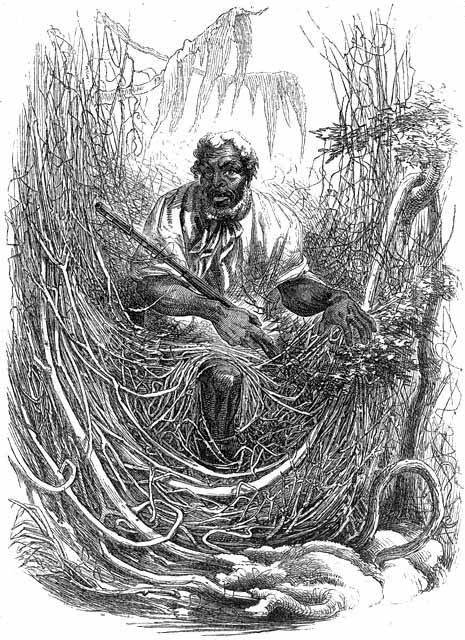Archaeologists have discovered secrets about America’s largest territory for runaway slaves.
They lived in a secretive community deep inside the North Carolina swamps.
Through the years of the early 1600s until the Civil War, the Great Dismal Swamp turned into a refuge for countless Native Americans that were running away from the frontier.
This 2,000 square miles of land stretched across southeast Virginia and northeast North Carolina.
This was a snake and mosquito infested swamp land.

The vegetation had been so thick that it was impossible for canoes and horses to make it through.
These hellish conditions would have been a hard way for the community of runaway slaves to live, although it would have been better than the life of enslavement.
They were worked until sunset in cotton fields at the end of their master’s whip.
At this place at least they could be free.
For a long time, there had been rumors of a hidden territory deep inside the swamps that was far away from the slave catchers and white settlers.
One of the few reports about the life at that settlement came from a man who was only named Charlie.

He had lived on the swamp and later went up to Canada where he was interviewed.
He had described isolated places which resembled traditional African villages.
This location was so cut off from the outside world that some people never saw a white person.
Some others had described groups of families that were living in the swamp and who lived off corn from small planting fields as well wild hogs from the woods.
Yet the archaeologist Dan Sayers from the American University is discovering some of the hidden secrets about the unknown community as part of a 10-year-long project.
The slaves hid in the swamps or woods for some time until they either got caught or made it to the freedom of the Underground Railroad with the assistance of the abolitionists and Quakers.
Sayers, who has set up the Great Dismal Swamp Archaeology Field School, started investigating the historic reports about the runaways. As well they started searching for the Maroon settlements.
They discovered references to the people of the Dismal Swamp in the year of 1714.
This had been reported by Alexander Spotswood, the colonial lieutenant governor of Virginia who has described the swamp as the “No man’s land” where the loose and disorderly people flock daily.
William Byrd II also wrote about his own encounter with the Maroons when he guided a survey into the swamp to determine the state border in 1728. He referred to them as mulattoes.
He had described being watched from the shadows by several of the runaways.
J.F.D Smyth, the British traveler who toured North Carolina throughout the duration of the Revolution, encountered a community that he described as “the runaway negroes.”
He had thought they had lived in the swamp communities for decades or maybe longer.

Sayers had been fascinated with the secret communities of Maroons and started looking for proof of the settlement around North Carolina and Virginia.
Yet some archaeologists have stated that they have wasted a lot of time looking around the hills and high ground before anyone finally proposed trying the swamps.
The actual breakthrough happened in the year of 2004.
A biologist had brought Sayers to a 20 acre island that was unknown except to a few local hunters that were in the area.
Sayers had stated that he will never forget seeing this location for the first time. It was one of the greatest moments of his life.
They had never thought they would discover such a large island.
This was a 12-week project that actually stretched to three eight-month sessions in of the swamp.
They have discovered a small but intriguing range of tools located on the island. Most of the residents were Native American in origin.
Inside of the swamp, there was only one source of stones – tools that had been left behind by the Native Americans.
The Maroons would end up finding them, modifying them, then keeping them until they were worn down to tiny nubs.
The team had discovered items like stone arrowheads that had been chipped away to be used as a small knife.
The Maroons used tools that came from the swamp; they would have rotted and disappeared.
The fugitives ended up leaving the swamp after the Civil War.
The archaeologists state the total of their finds, which also include gun flint fragments and flakes of clay pipes, have been able to date the discoveries by examining the soil samples.
They measured when they had last been exposed to the sunlight.
From the records that have been found, the Maroons lived in the swamp then.
There is no proof of anyone else existing there. No one would be at this place unless they had to hide there.
Yet with only one percentage of the island unearthed so far, there is likely to be much more that they can learn about this unique group of escaped slaves known as Maroons.+12
The Great Dismal Swamp was the home to one of the biggest population of the Maroons.
Yet there were some others communities close to Florida and New Orleans which are also to be researched.
Yet these other communities were not as isolated from the outside world as the people of the Dismal Swamp.

The biggest threat to those who had come in the year of 1763 was the Washington Ditch, a canal cut through part of the swamp by slaves to transport timber.
This had brought the runaways to close encounters with the slave catchers, Mail Online reported.
Yet there is as well documentation that several of the escaped slaves had worked with the timber merchants. They cut down timer and sold it on.
There is evidence that the escaped slaves existed in the swamp throughout the Civil War and the actual end of slavery in 1863.
That is when it seems that they had moved out of the area.
Archaeologists have conducted a very in-depth research into the escaped slaves inside the United States.
They state this have been overlooked due to racial bias.
They believe that historians have instead highlighted the role of the whites.
They downplayed the resistance of the runaways and their established communities inside of the U.S.
